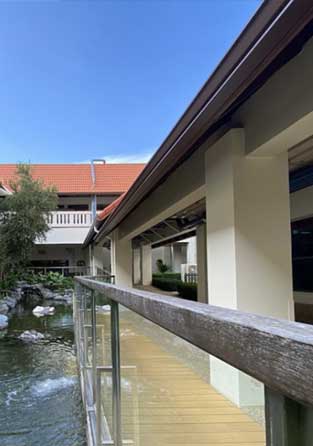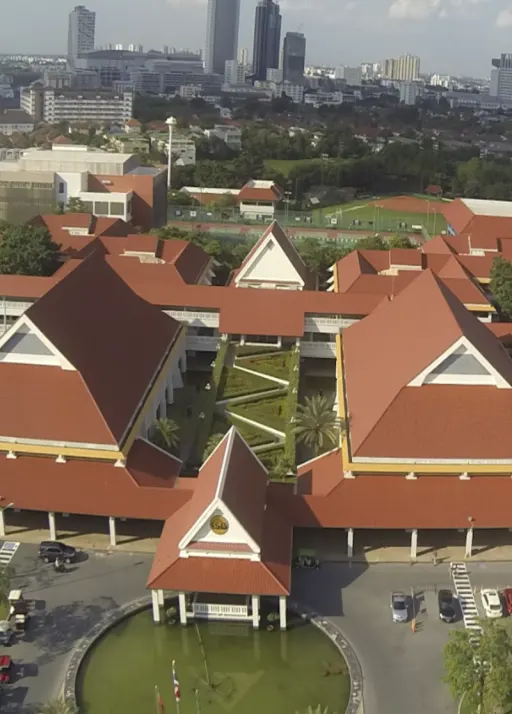World Languages and Global-Mindedness at ISB
In a world with rapidly advancing translation technology and English as a common language, educational institutions can use the study of additional languages to promote genuine global awareness. Languages can be the key to understanding international cultures, as they open the door to a world of new experiences and possibilities. We at ISB are proud to celebrate global-mindedness and respect as key characteristics for learners, while championing inclusiveness and an ability to speak multiple languages with confidence.
ISB’s language teachers draw on their diverse experiences to support multilingualism in a myriad of ways. These range from coaching fellow teachers on translanguaging in the classroom, to equipping parents to nurture children’s languages, to helping older students share language with younger students – to, of course, teaching challenging and engaging language classes.
Language is a brain builder, an economic asset, and a key factor in basic and complex communication – the very heart of the human experience. To thrive as global citizens, we need to effectively communicate within a wide range of multicultural contexts. Language is a marker of identity and culture, helping us to make sense of ourselves, our perspectives and our world.
The Range of Language Offerings at ISB
ISB offers an extensive World Language Program with six languages in the Middle and High School during the school day – French, Japanese, Korean, Mandarin, Spanish and Thai. Some of these are offered as both Non-Native and Native Languages. Some of these are offered as Native Languages only. We offer continuous support for all six languages from our Middle School through the IB Diploma Program level.
In all language classes, our students learn to:
-
- communicate effectively and confidently in the international community.
- understand and respond appropriately to spoken, written and body language.
- clearly communicate ideas and information appropriate to a given audience.
- generalize and apply language in new situations.
- connect to prior learning as well as cross-curricular concepts and ideas.
- understand the nature of language and gain insight into other languages.
- understand the concept of culture and gain insight into other cultures.
- display cultural sensitivity to diverse perspectives, practices and products.
- be flexible, tenacious, self-reliant, and reflective, as they learn to take risks.
Please refer to our infographic below for a full description of Native and Non-Native languages offered at ISB from Elementary through to High School. For more information on Native Language classes please see our website under Signature language programs.
Global-mindedness and our World Language Programs
ISB’s World Language classes provide a wide range of learning opportunities while leveraging the cultural diversity of our school community.
Cindy Plantecoste, Middle School Dean of Academics, reminds us that this focus embodies the essence of global-mindedness, a theme that is reflected in the program’s philosophy statement: “Exploring our rich cultural diversity helps us to gain a better understanding of ourselves and others; exhibit higher levels of empathy; value and display cultural sensitivity to diverse perspectives, and practices.”
The foundation for the language program is built around knowing one’s own culture and comparing and contrasting it to the cultures of others. This shift in perspective helps students find similarities, make connections, and bond through shared beliefs and values. Our language programs provide dedicated time and space, curricular units, and a broad range of learning activities that allow students to explore their own cultural values, beliefs, products, and practices while considering those of others.
By working on these skills and dispositions with intentionality, our students gain a better understanding of different points of view. This greater understanding allows them to experience empathy, to demonstrate compassion, and to value the cultural diversity that surrounds them. Ultimately, these experiences help our students move toward our objective of building a community of caring, global citizens.
Each of our language-based offerings aims to provide a holistic introduction to language in a cultural context. The ISB approach to language teaching emphasizes academic as well as social language; forging connections between languages; and engaging with high cognitive, authentic, language-rich learning experiences. At ISB, language class is as likely to feature a debate, a scavenger hunt, or a mock newscast as it is to have flashcards and grammar quizzes. Teachers work to infuse each class with high-level practice of speaking, listening, reading, and writing.
Together with the various language classes offered during each ISB school day, a number of native languages are taught as an extension to the school day through our Native Language Academy. These language courses are co-supported by ISB and the parents in our school community, through ISB’s after-school Native Language program. Through this integration of language learning within a larger community environment, we aim to bring about a greater respect for the role each of us plays in today’s global culture.
In our global community, the concept of multilingualism represents an important aspect of academic and social learning. With some 40 languages represented in ISB’s student body, multilingualism and diversity feed into a special kind of unity in our community.
Languages of the world infographic by International School Bangkok










 日本語
日本語
 한국어
한국어
 中文 (简体)
中文 (简体)
 ภาษาไทย
ภาษาไทย